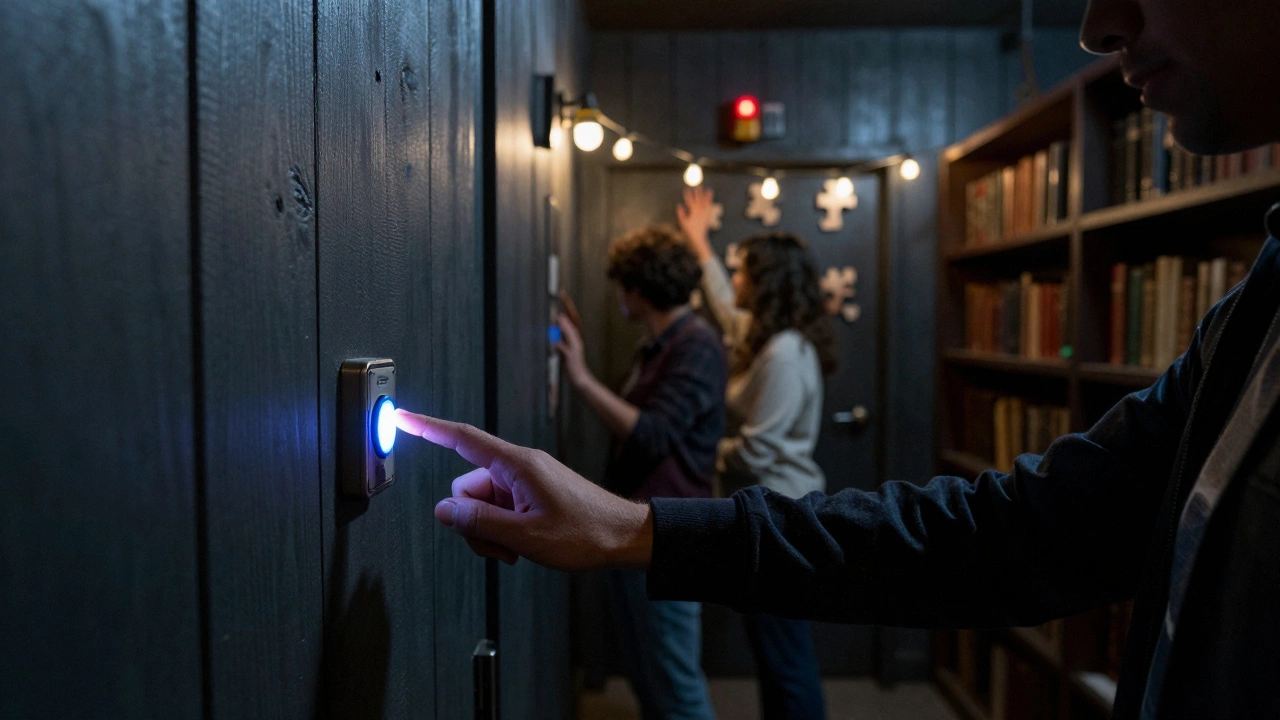First Escape Room Steps: Your Easy Beginner Guide
Walking into an escape room for the first time can feel like stepping onto a movie set. You’ve seen the movies, you’ve watched friends brag about “escaping in 30 minutes,” and now you’re wondering what to actually do. Below are the practical steps that turn curiosity into a fun, stress‑free experience.
Step 1 – Book the Right Room
Not all rooms are created equal. Look for a “beginner” or “easy” label when you book. These rooms usually have straightforward puzzles, clear storylines, and generous hints. Check the time limit – most start at 60 minutes, which gives you enough breathing room without dragging on.
Step 2 – Dress for Comfort
Wear clothes that let you move easily. Think jeans, leggings, or stretchy pants, and shoes you can slip on quickly. Avoid high heels or bulky jackets; you’ll be crawling, ducking, and maybe lifting small objects. A light jacket is fine, but keep it easy to drop if you need to squeeze under a low shelf.
Step 3 – Bring the Essentials
Leave big bags at the front desk. Most venues provide a locker for personal items. Bring a water bottle if the room allows (check the policy) and a small snack for after the game. A phone is handy for taking pictures of clues, but keep it on silent and use it only if the staff permits.
Step 4 – Arrive Early
Getting there 10–15 minutes early lets you fill out any paperwork, get a quick briefing, and settle any nerves. The staff will explain the basic rules, safety procedures, and how to request hints. Use this time to chat with your teammates and decide who will take the lead on note‑taking or clue‑cataloguing.
Step 5 – Listen to the Briefing
The briefing is more than a formality; it tells you what you can and cannot touch, where the emergency exit is, and how the hint system works. Pay attention – many clues are hidden in plain sight, and a missed instruction can cost you minutes.
Step 6 – Scan the Room Quickly
When the door shuts, take a 30‑second sweep. Look for obvious items: locked boxes, strange symbols, or color‑coded objects. Move together but give each other space; two sets of eyes catch more details than one.
Start a simple inventory: write down numbers you see, copy symbols, and note any patterns. Keep the list on a piece of paper or a whiteboard if the room supplies one.
Step 7 – Test, Test, Test
Don’t assume a lock is the final step. Try every key, code, or combination you find, even if it feels wrong. Many rooms have multiple layers – a drawer might hold a clue for a lock on the opposite wall.
Step 8 – Use Hints Wisely
If you’re stuck for more than a couple of minutes, ask for a hint. Most venues allow one or two hints per game. A good hint points you toward a specific area rather than giving the answer outright.
Step 9 – Stay Calm and Communicate
Pressure builds as the clock ticks, but panic only clouds judgment. Keep talking, share what you’ve tried, and celebrate small wins. A quick “I think this number belongs here” can spark a breakthrough.
Step 10 – Celebrate the Finish
Whether you escape with seconds to spare or need a few extra minutes, give yourselves a pat on the back. The staff will unlock the door, and you’ll have a chance to debrief, take photos, and maybe book the next, tougher room.
These first escape room steps turn a mysterious puzzle box into a fun group challenge. Follow them, stay curious, and you’ll walk out feeling like a puzzle pro, ready for the next adventure.
Escape Room Tips: What To Do First For A Winning Start
Wondering what to do first inside an escape room? Get actionable tips, tested strategies, and fun facts on how to start strong, boost your team, and solve puzzles faster.



